Feijoa — also known as pineapple guava or guavasteen — is a delicious, aromatic fruit cherished for its unique flavor, blending hints of pineapple, strawberry, and mint. While relatively unknown in many parts of the world, feijoa enjoys a cult following in certain countries where it flourishes thanks to ideal growing conditions. This leads us to the question: Which country is the largest feijoa producer in the world?
The answer is clear — New Zealand is currently the largest and most dedicated producer of feijoa globally, both in terms of commercial cultivation and cultural popularity. Let’s dive into the history, cultivation, production volumes, and reasons why New Zealand claims the top spot in the feijoa world.
What Is Feijoa?
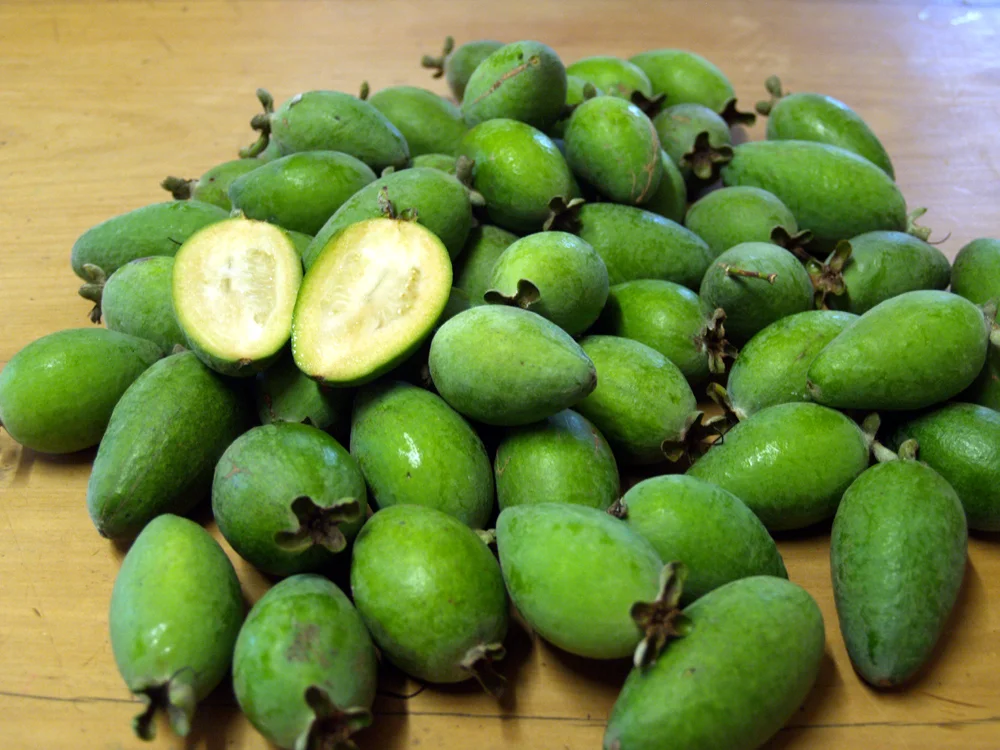
Feijoa (Acca sellowiana) is a flowering plant in the myrtle family, native to the highlands of southern Brazil, eastern Paraguay, Uruguay, and northern Argentina. The plant produces egg-shaped green fruits with a gritty, juicy flesh that emits a strong, sweet aroma.
Key characteristics of feijoa:
- Flavor: A unique combination of guava, pineapple, strawberry, and mint.
- Appearance: Green, egg-shaped fruit about the size of a chicken egg.
- Texture: Gritty exterior with a jelly-like seed pulp center.
- Uses: Eaten fresh, made into jams, chutneys, desserts, wines, and even skincare products.
While it originates from South America, feijoa found an ideal second home thousands of kilometers away in New Zealand.
Feijoa’s Journey from South America to New Zealand
Feijoa was introduced to New Zealand in the early 20th century, and the country’s cool, temperate climate and fertile soils proved perfect for cultivating this hardy subtropical fruit.
Over the decades, New Zealand developed superior commercial cultivars through selective breeding, improving fruit size, flavor, and pest resistance. By the late 20th century, it had become a popular backyard fruit and a small but growing export product.
Today, feijoas are a staple in many New Zealand gardens and markets, earning them the affectionate nickname “Kiwis’ favorite fruit.”
Why New Zealand Is the Largest Feijoa Producer
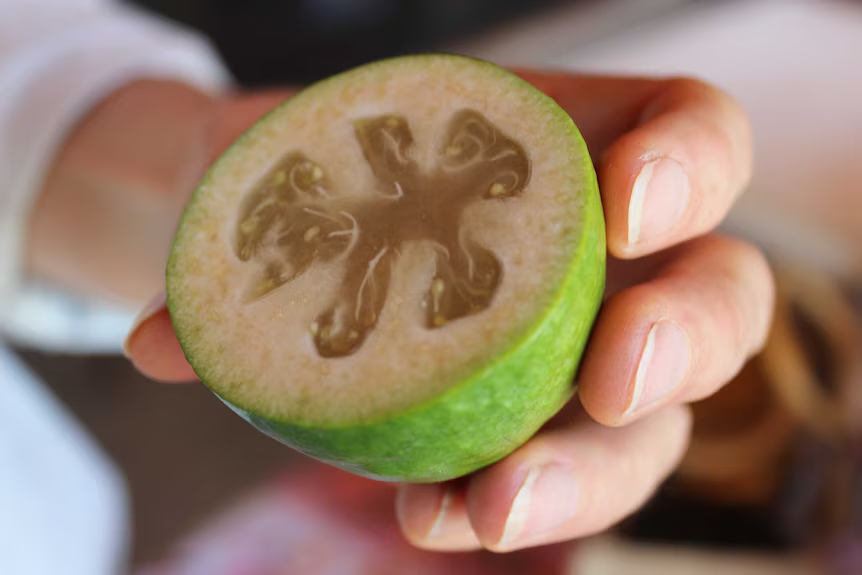
Several factors contribute to New Zealand’s leadership in feijoa production:
Ideal Climate
Feijoa thrives in cool subtropical to temperate climates with mild winters and moderate summers. New Zealand’s North Island, particularly regions like Bay of Plenty, Hawke’s Bay, Auckland, and Northland, provides these exact growing conditions.
Cultural Popularity
Few countries have embraced feijoa as enthusiastically as New Zealand. The fruit features prominently in local recipes, beverages, and seasonal festivals. It’s so popular that many homes grow their own trees.
Advanced Cultivar Development
New Zealand horticulturists have developed numerous high-quality feijoa cultivars like Apollo, Unique, Opal Star, and Kaiteri, ensuring consistent yields and superior fruit quality.
Commercial Infrastructure
While feijoa remains largely a niche crop globally, New Zealand has built a reliable commercial framework for domestic sales and export markets, particularly to Australia, the Pacific Islands, and select parts of Asia and Europe.
How Much Feijoa Does New Zealand Produce?
Accurate global production statistics for feijoa are limited due to its niche market status. However, New Zealand is estimated to produce between 3,000 to 5,000 tonnes annually, making it the world leader in organized, commercial feijoa production.
While South America remains rich in wild and locally cultivated feijoas, their production isn’t centralized or tracked commercially at the same scale as New Zealand.
Feijoa in Other Countries
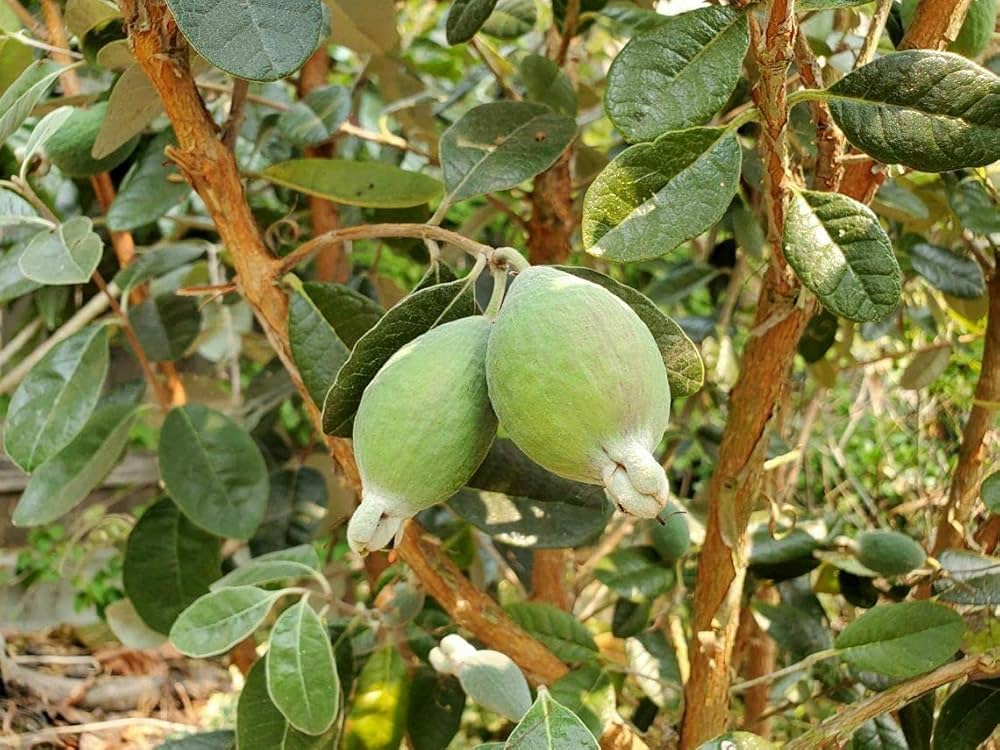
Though New Zealand dominates global production, other countries also grow feijoa:
Brazil (Native Range)
Feijoa is native to Brazil, particularly in southern regions like Rio Grande do Sul, where it grows both wild and in small orchards. However, feijoa has never achieved the commercial or cultural prominence in Brazil that it enjoys in New Zealand.
Australia
Feijoa is grown in New South Wales, Victoria, and Tasmania. Australia imports significant quantities of New Zealand feijoa but has a growing domestic industry as the fruit gains popularity.
United States
Feijoa is cultivated in California’s Central Valley and some southeastern states like Florida. However, U.S. production remains minor and mainly caters to farmers’ markets and specialty grocers.
Russia & Ukraine
Feijoa has gained attention in Russia, Georgia, and Ukraine, where it’s grown in Black Sea coastal regions with mild climates. It’s highly valued for its immune-boosting properties during cold winters.
Culinary Uses of Feijoa
In New Zealand, feijoa is enjoyed in a variety of forms:
- Eaten fresh by cutting the fruit in half and scooping out the pulp.
- Made into jams, chutneys, and sauces.
- Used in baking — popular in muffins, cakes, and crumbles.
- Juiced or turned into smoothies and craft ciders.
- Incorporated into skincare for its antioxidant-rich extract.
New Zealand’s food culture treats feijoa as both a nostalgic backyard treat and a contemporary ingredient in artisan products.
Feijoa’s Health Benefits
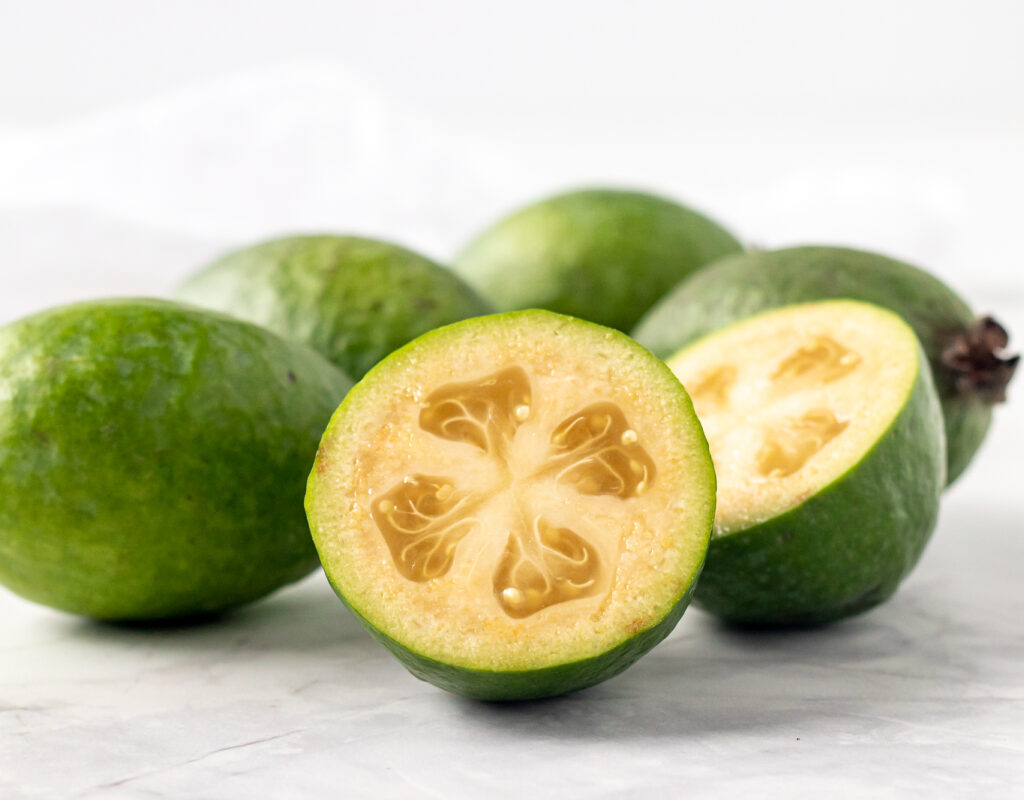
Feijoas aren’t just tasty — they’re also nutritious. Health benefits include:
- Rich in vitamin C — boosts immunity.
- High dietary fiber — aids digestion.
- Low in calories — perfect for weight management.
- Packed with antioxidants — fights oxidative stress.
- Supports cardiovascular health — contains potassium and magnesium.
These benefits, combined with its unique flavor, have helped feijoa gain a loyal following wherever it grows.
Global Export Markets
While New Zealand remains the largest producer, it also leads global feijoa exports, primarily to:
- Australia
- United States
- Singapore
- Hong Kong
- United Arab Emirates
Due to the fruit’s short shelf life, most exports happen during the March to June harvest window and are targeted at specialty grocers, gourmet chefs, and expatriate communities.
The Future of Feijoa Cultivation
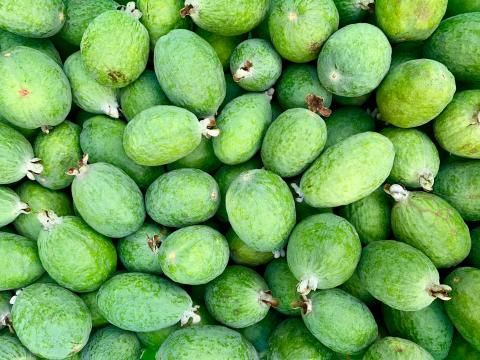
With global interest in exotic, health-boosting fruits rising, feijoa holds potential for broader cultivation in:
- Southern Europe (Spain, Italy)
- South Africa
- Chile
- Subtropical Asia
However, logistical challenges like perishability and limited consumer awareness outside niche markets remain barriers to rapid expansion.
New Zealand, meanwhile, continues to innovate with better post-harvest handling, storage, and feijoa-based products to maintain its leadership position.
Conclusion: A Kiwi Fruit Hero
So, which country is the largest feijoa producer in the world? Without question — New Zealand. From its perfect growing conditions and advanced cultivars to cultural affection and export leadership, New Zealand has transformed this South American native into a beloved national fruit.
Whether enjoyed fresh from the tree, in homemade jams, or artisan ciders, feijoa remains a vibrant symbol of New Zealand’s horticultural ingenuity and passion for unique, flavorful produce.
Quick Summary Table:
| Feature | Detail |
|---|---|
| Scientific Name | Acca sellowiana |
| Native To | Southern Brazil, Paraguay, Uruguay, Argentina |
| Largest Producer | New Zealand |
| Main Regions | North Island (Auckland, Bay of Plenty, Northland) |
| Annual Production | 3,000–5,000 tonnes (approx.) |
| Popular Uses | Fresh, jams, baking, beverages, skincare |
| Harvest Season | March to June |
Would you like me to prepare SEO meta descriptions, Pinterest image prompts, or article headings for this as well? I’d be happy to help!

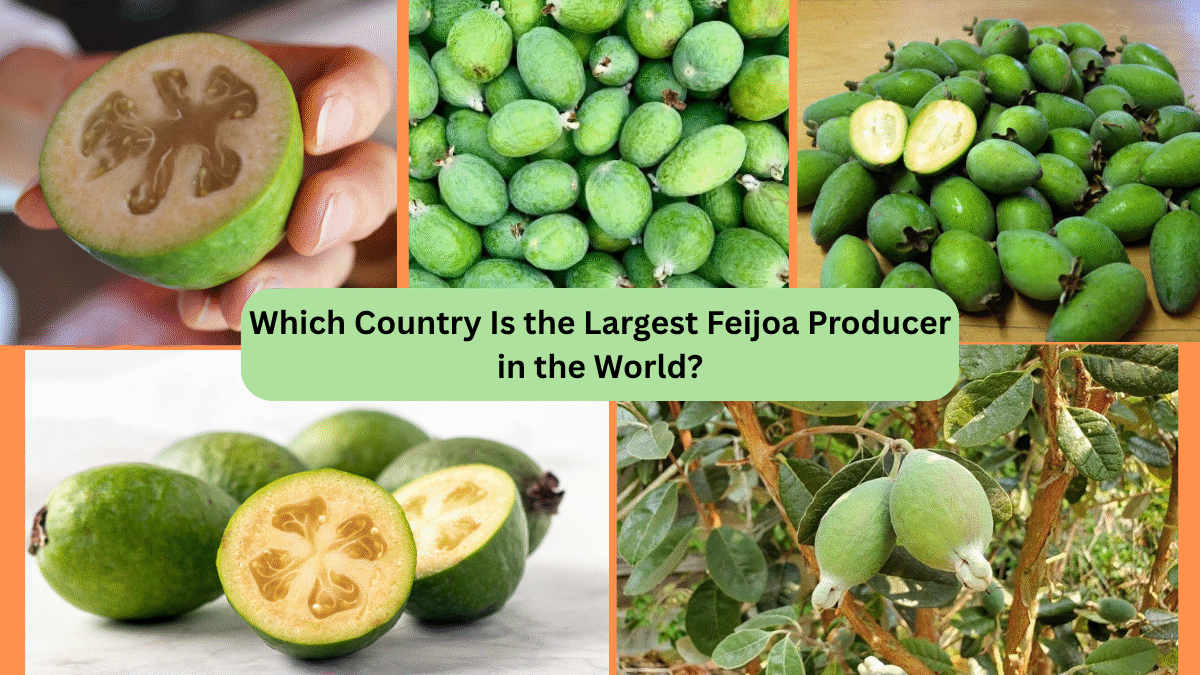



Leave A Comment